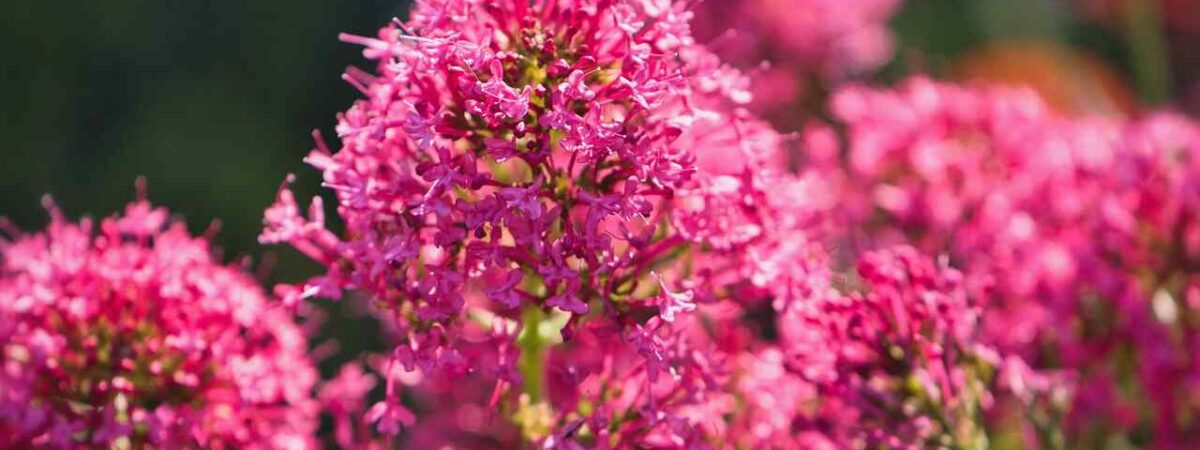Do you want to spruce up your garden with beautiful, colorful, and nicely scented flowering plants?
Then why don’t you go for a red valerian plant?
Don’t know about the growing and caring guide of this plant. Then read the article below to find out.
Plant overview
Red valerian, scientifically termed the Centranthus ruber, is a drought-tolerant herbaceous perennial plant that blooms throughout the summer and makes a good cut flower.
The blooms come with a spray of beautiful crimson, pink or white shades of nectar-rich flowers that are scented and attract bees, butterflies, and other pollinators for their smell, in the fascinating hummingbird hawk moth.
The valerian variety is not the same as the herb which is known as common valerian, Valeriana officinalis. The red valerian plant has no toxic effects. So you don’t take good care of your pets and kids around this plant.
However, it also has no medicinal value. On the other hand, the root of common valerian is used in herbal medicine.
Valerian Varieties and Species
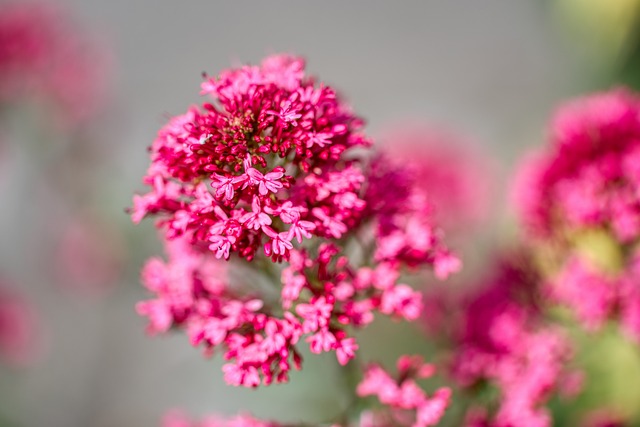
Red valerian belong to the same Caprifoliaceae family which is actually a kind of Centranthua.
So it is not confused with the Valerian Officinalis plant that belongs to the genus Valeriana from the family of Caprifoliaceae.
This Valeriana genus contains many other wild species rather than red valerian that are not generally cultivated in gardens. Such species include marsh Valerian (V. dioica) or tuberous Valerian ( V. tuberosa).
How to grow red valerian?
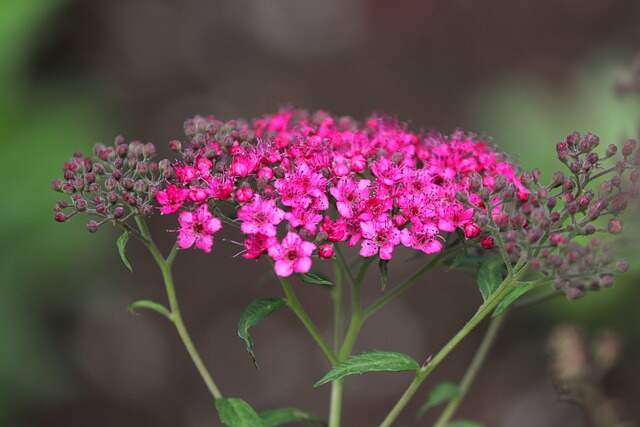
Red valerian is an easy-growing plant that can be grown from seed by direct sowing it in the garden soil after the high danger of frost has passed. The ideal time for sowing the seeds of red valerian outdoors should be in the early spring before the last frost.
Collect the seeds from the nursery or nearest plant shop. Plant those seeds between 3/8 and 1/2 inches deep. Once you have sown the seeds in the soil, they should be lightly covered.
When planting your seeds in the soil, they should be spaced about 30 to 45 cm (12 to 18 inches) apart from each other.
The clumps of the red valerian will eventually increase and attain the size of about 18 inches wide and It takes around two to three weeks for germination.
It is suggested to grow these plants in sunny parts of the garden. When it comes to soil preference, locate your plant ideally in limy soils which have good drainage.
If you are planning to grow seedlings of Red valerian and other Centranthus species indoors, then it is recommended to start the process about eight weeks before your plan of transplanting them into the garden.
These plants require about three or four weeks to germinate ad thrive at a temperature of about 18 degrees celsius (64°F).
How to care for red valerian?
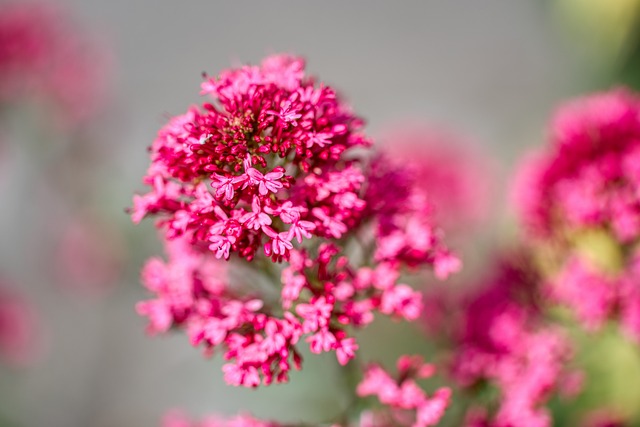
Although red valerian is an easy-to-grow plant, they require the slightest care for better bloom. Below is the proper guide for taking care of a red valerian plant.
Light
Red valerian is a species that is not super-sensitive to bright sunlight and can cope in a full sun position. In fact, they require bright indirect sunlight to grow.
So while selecting a place for your red valerian plant, it is suggested to plant it somewhere where it has full access to the afternoon sun in a partial sun situation, which will help it to thrive.
Soil
Red Valerian can grow well in most soil types and textures as long as the sun has a good drainage system. However, it prefers sandy loamy soil to grow.
It grows wildly in grassland areas and meadows. Clay soils are not perfect for this plant as it may not have the proper drainage that is necessary to keep this plant consistently moist, so adding compost may help to grow the plant.
Water
Red Valerian requires a consistent amount of light moisture to thrive and grow.
Temperature and Humidity
Valerian is very cold and hardy and it can survive well in harsh winter conditions. The plants tend to die back in winter and emerge again during spring.
Fertilizer
Although fertilizer is not that essential, it is suggested to go for a nitrogen-rich fertilizer for better growth.
it is also best to avoid a standard NPK fertilizer. To prevent the roots of your red valerian plants from becoming excessively large.
How to prune red valerian?
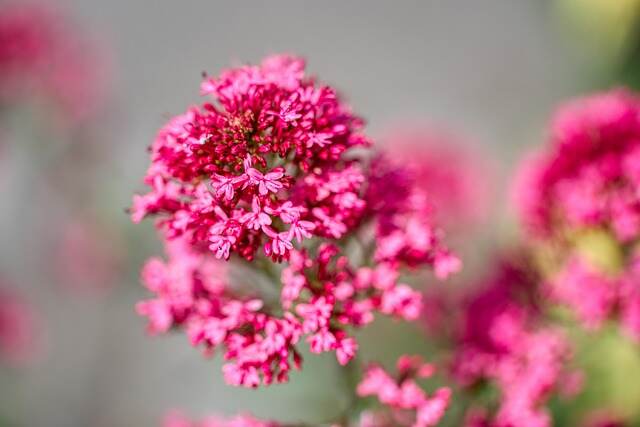
The red valerian plant tends to die to the ground during the winter and again bounces back along with the appearance of new daughter plants around each base in the spring.
The red valerian plant self-seeds readily. However, cutting it back or pruning it drastically after the bloom period can help you to control any unwanted spread of your plant.
Pruning also ensures that the bloom will be more abundant in the following year. Red valerian often blooms from early summer to September, so it should not be tempted to cut back the flowers too early.
How to propagate red valerian?
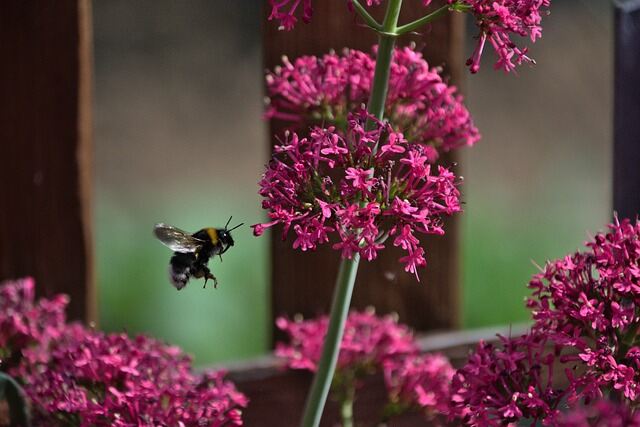
Red valerian can be propagated through seed, division method, and or basal cuttings. However, the two widely used methods are sowing seeds and by taking the division.
While growing red valerian, sow seed indoors onto moist compost from the march. Cover the soil where you have grown the seed with compost and place it in a plastic bag.
Germination of seeds of the red valerian takes up to three to four weeks. After germination, when the seedlings are large enough to handle, you can transplant them into larger pots or plant them outside from late April, by placing them 30cm apart.
Alternatively, you can sow seed outdoors where it is to flower from April onwards. Remove any weeds with the plant, rake the soil and sow your seed sparingly by raking it again to give it a light covering of soil. After some weeks of germination, thin your seedlings by, keeping the most vigorous ones, 30cm apart.
you can also propagate your red valerian by taking cuttings. During spring, when the new shoots of your plant are about 15cm long, you can use a sharp knife to cut just below a bud.
Take several cuttings from your existing plant, remove all the top leaves on each stem, and space your cuttings out in a pot that is filled with gritty-free-draining compost.
Cover the pot where you have grown the plant with a plastic bag and leave it in a cool, light position indoors. Thin the seedlings to 30cm apart after germination, keeping the most vigorous ones.
Conclusion
Red valerian is a beautiful plant that not only beautifies your garden but also fills it with a sweet smell.
As you read this article this far, you might have come up with the growing and caring guide of red valerian.
Then what are you waiting for?
Grow this beauty in your garden and increase the beauty of your place.
You may also like to read
How to grow and care for rocky mountain juniper – An effective guide

